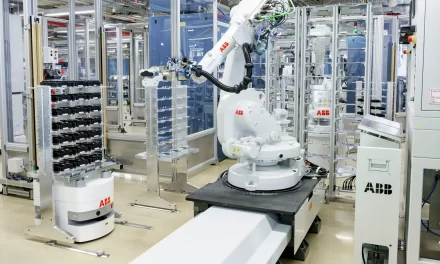Electronics Manufacturing – the Human Element
By Kathy Miller, Co-founder of OpSisters

Kathy Miller
Even in the high-tech world of electronics manufacturing, it is important to remember that people are still at the heart of every business. As the former Plant Operations Manager of a large automotive electronics manufacturer, I often reflect upon how the human element impacted the significant positive movement of traditional operational metrics in the business. The tried-and-true focus on engaging the entire workforce to contribute to continuous improvement accelerated business performance initiatives when that automotive electronics business was recognized with a Shingo Award and has not failed to accelerate performance in every type of manufacturing operation since. Here are some other positive actions that will impact the people that are the heart of every manufacturing operation.
Do: Be explicit about the organization’s vision and mission. People seek meaning in life, and with so many hours of their life being spent at work, employees who find meaning in the organization’s vision and mission will be more connected to their work and committed to the company. A mission such as “To be the global leader in automotive systems and related product lines,” may fall flat to a mission statement such as “To enable the vehicles that move the people of the world,” as the latter suggests a contribution to the betterment of mankind.
Do: Articulate the organization’s values, which communicate how the company will regard all stakeholders. This should include treatment of the environment, communities in which the organization operates, customers at all stages of the product life cycle, and every last employee from the company’s Board Chairman through the surface-mount operator. These values should also include every member of the extended supply chain.
Do: Hold leaders accountable to being living examples of the organization’s values. While no human is perfect, leaders set the norms for acceptable behavior. Leaders who consistently disregard the articulated values of the organization through words or actions that are inconsistent with the spirit of the stated guiding principles create an environment in which psychological safety is compromised and toxicity is cultivated.
Do: Embrace those areas of common ground that cannot be debated with the workforce, whether that workforce is represented by organized labor or not. Safety for all people and quality for all products and services serve as powerful inspiration for initiatives that naturally contribute to the well-being of the team members and customers, and consequently for the success of the business.
Do: Set goals for team members that align all employees toward successful business outcomes. Goals need to be specific and at levels of difficulty that stretch individuals but perceived as attainable. This will contribute to the energy that the workforce exerts as they contribute to organizational objectives.
Do: Set goals that are meaningful to the employees in their daily work. A productivity goal at a corporate level, such as sales per employee, will not be meaningful to a test operator, who really has nothing to do with sales. Units tested per hour as an alternative metric is aligned with corporate productivity goals (so long as quality is not compromised) and may be more meaningful to his/her daily contributions.
 Do: Provide visual controls to let employees know if goals are being met or missed at any given time. This applies both in the office environment and within the factory walls. This feedback enables the team to know if they are winning and provides information to the other members of the team where assistance needs to be provided.
Do: Provide visual controls to let employees know if goals are being met or missed at any given time. This applies both in the office environment and within the factory walls. This feedback enables the team to know if they are winning and provides information to the other members of the team where assistance needs to be provided.
Do: Encourage creativity/playfulness. One of my favorite sayings is: “Take your job very seriously, but yourself, not so much.” As a leader of a million square foot facility producing audio circuit boards, airbag control sensors, heating-ventilation-air conditioning control modules and powertrain controls, my team produced thousands of automotive electronic parts per day. Challenges to meet daily production with impeccable quality and improve our performance day after day, week after week were abundant. Studies have shown that workplace play can promote creativity. Small efforts toward light heartedness and relationship building fueled a spirit of creativity and accelerated problem-solving efforts among the entire team. We had people introduce themselves in novel ways during meetings, participate in team building exercises, had friendly competitions to improve workplace organization to win homemade trophies and celebrate with pizza. It is ok, even encouraged, to take one’s work seriously while sporting a smile.
Do: Enjoy and celebrate the results. During a 3-year period of lean manufacturing implementation producing integrated body, powertrain, chassis and safety electronics, executing and improving robust processes, and fostering an inclusive culture, business results improved as follows: 24% productivity improvement (sales/payroll dollar); recordable safety incident rate reduction of 80%; inventory turn increase of 25%; defect rate reduction of 85%.
By applying these human-centered principles in combination with implementation of lean principles, I have enjoyed similar results in leading transformations in numerous manufacturing businesses since.
Kathy Miller is co-founder of OpSisters, a training, consulting and coaching organization started in 2020. They work with companies, teams and individuals interested in improving business performance results through proven lean principles and inclusive cultures. She is also co-author of STEEL TOES AND STILETTOS: A True Story of Women Manufacturing Leaders and Lean Transformation Success (Routledge/Productivity Press, 2021). Prior to OpSisters, Miller was a Senior Operations Executive who held numerous global vice president and director roles both in manufacturing and lean enterprise leadership.












